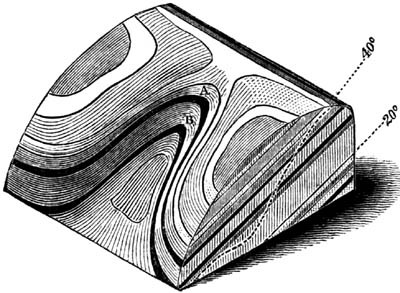Learning Through the Anthropocene (Part 1)
アントロポセン(人類の時代)からの学び(その1)
“the Anthropocene… is the most decisive philosophical, religious, anthropological, and political concept yet produced as an alternative to the very notion of ‘modern’ and ‘modernity’.”
– Bruno Latour, “The Anthropocene and the Destruction of the Image of the Globe” lecture from the 2013 Gifford Lectures at the University of Edinburgh.
Where are we? The Earth, no doubt. More difficult to answer is when are we. As humans we have been transforming our environments non-stop for the last 200,000 years of our recognizable existence as a species: hunting, taming, building, growing, mining, burning, and re-routing the world to suit us. And yet that 200,000 years is just a tiny fraction of the Earth’s deep time, in fact just 0.000014 of its current age; when we are is actually the thinnest sliver of planetary time.
Ironically, just when the Earth became so much older for humans, it also became so much smaller. Vast and unexplored just some 400 years ago, we have now quickly discovered that it is not only relatively small but also finite. As our species has exponentially spread to every crevice of this rocky planet we have shaped the landscape and lifescape to such an extent that it is no longer possible to clearly distinguish what is human and what is Nature. It is a novel situation for scientists and poets alike, indeed for almost every aspect of modern life that has relied fundamentally on the distinction between “the cultural” and “the natural” as separate realms of activity.
How can we take measure of this historic change? Right now an eminent group of scientists, the International Commission on Stratigraphy, is debating whether we have initiated a new geological era: the Anthropocene. Although our current era, the Holocene, began only some 12,000 ago at the end of the last Ice Age, since then our civilizations have become the primary engine of change on the planet. From a geological perspective this means that the reality of the hypothetical Anthropocene is a matter of the future as much as the present; human activity like large-scale agriculture, intensive fossil fuel use, atomic explosions, and human-driven mass extinction are significant not simply because they are technological innovations, but because their biogeochemical mark will be legible in the sedimentary rock millions of years from now.
Of course from our current, collective human perspective we care about the forces that define an Anthropocene because they affect our lives directly right now, but the geo-logic of the Anthropocene also insistently reminds us that our behavior on climate change or any other macro-scale phenomena in the present also directly affects human and non-human life well into the future. Will there be geologists to read the traces of Anthropocene in the rocks millions of years from now, and if so is there any chance they will be our human descendants? Or will our anthropocentric actions in an Anthropocene be responsible for a future devoid of humanity?
Given the immensity of these questions, I suspect the idea of the Anthropocene is here to stay, regardless of what official decision the Commission of Stratigraphy makes. For even though the Anthropocene is in one sense a scientific construct, its meaning as both a realistic description of life today as well as a broader metaphor resonates far beyond science. The Anthropocene has the potential to reframe long established concepts like “environmentalism” and “sustainability,” which have become so vague as to risk irrelevance. Unlike those terms, the Anthropocene is neither an adjective nor an aspiration, but instead a state of being identifiable within the narrative of the planet’s history. What renewed significance might political movements against nuclear weapons, historically framed by Hiroshima and Nagasaki, find if also understood in the context of deep, geological time? Deep time helps us make sense of life on Earth right now by looking far into the past as well as far into the future simultaneously — in the “long now” of the Anthropocene the past and future are active creations of this living moment.
These might seem like bold claims for a concept whose formal status is not yet decided, but again it is precisely in its possibilities for transcending the confines of any one disciplinary expertise that the Anthropocene notion gains its strength. As an inescapably unifying idea, it invites us to consider new ways of learning that extend traditional academic boundaries as well as disrupt them. Its expansiveness is not about diluting any one focus, but instead connecting otherwise scattered foci. As Bernd Scherer, an organizer of the ongoing “Anthropocene Project” at the Haus der Kulturen der Welt in Berlin has commented, the concept, ”is so interesting because it is an idea in the making, it is not already defined by disciplines as a categorized notion… it lets us talk across disciplines.”
When “culture” and “Nature” are no longer divided, traditional disciplines have to reconceive their boundaries and their meaning. If the Anthropocene is taken seriously then vast transformation of the way we think about knowledge and media is not only necessary, but in fact inevitable — conceptual thinkscapes as features of the planet will transform just as physical landscapes do within the Anthropocene condition….(to be continued)

References:
*Latour, Bruno. 2013. “The Anthropocene and the Destruction of the Image of the Globe,” as part of the Gifford Lectures at the University of Edinburgh. Accessed from:
http://www.hkw.de/en/programm/projekte/2014/anthropozaen_curriculum/anthropozaen_curriculum_1.php
*Scherer, Bernd. 2015. “The Anthropocene Project Part 1,” lecture at the Anthropocene Conference at the Tate Modern, London. June 5, 2015. Accessed from:
http://www.tate.org.uk/whats-on/tate-modern/conference/anthropocene-project
*The Anthropocene Campus
http://www.hkw.de/en/programm/projekte/2014/anthropozaen_curriculum/anthropozaen_curriculum_1.php
